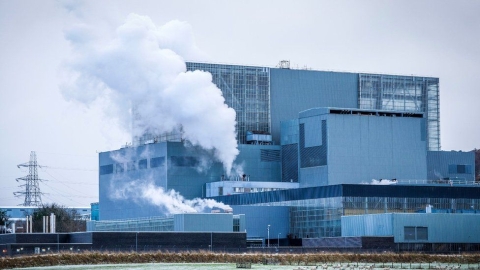Hunterston B Closure a Step Nearer To Making Scotland Nuclear Free

Hunterston B nuclear power plant in North Ayrshire, Scotland has been shut down for the final time. Construction of Hunterston B began in 1968 and reactors 3 and 4 began operating in February 1976 and March 1977. It has been generating electricity for 46 years which is two decades after its anticipated lifespan. Plans had been made to operate Hunterston until 2023, however hairline cracks found in graphite bricks prevented this. Each of the two reactor cores is made up of 3,000 bricks. The concern was that too many cracks, combined with a rare seismic event, could affect the structural integrity of the core and prevent it being shut down in an emergency.
Although this power station has closed nuclear energy will still be generated in Scotland at the newer Torness power station in East Lothian. EDF Energy have announced that Torness will close in March 2028. The position of the Scottish government is opposition to the building of new nuclear power stations in Scotland. A number of organisations, such as the Celtic League, have long pointed out the dangers of nuclear power, not least being that posed by ageing nuclear reactors. The environmental campaigning group Greepeace have also pointed out the issue of nuclear waste disposal.
Since the time that humans have been producing nuclear waste, there has been a failure in solving the problem of how to dispose of it. It is estimated that over a quarter of a million tons of hazardous nuclear waste exists that requires "final" storage. That figure is added to annually by some 12,000 tons. This will increase as further planned nuclear power plants are built. Greenpeace make the point that: "the current “solution” for dealing with highly radioactive nuclear waste involves burying it in deep underground sites. Whether the storage containers, the store itself, or the surrounding rocks will offer enough protection to stop radioactivity from escaping in the long-term is impossible to predict."
It is right for Scotland to join with those other nations who have turned their back on nuclear energy. Nuclear energy is both expensive and dangerous, which has no place in a safe, clean and sustainable future. We need to move away from nuclear power and this is entirely possible. Electricity generation on a large scale could be achieved by developing a number of other cleaner alternatives. These include combined heat and power (CHP), using fossil fuels more cleanly and efficiently, and renewable electricity generation such as wind, wave and tidal power. Renewable energy is better for the environment, the economy, and doesn’t come with the risk of a nuclear meltdown.
Image: Hunterston B





